Ground Reports
Ground Report: Tripura’s Three Small Towns That Have Become The Primary Entry Points For Rohingyas Into India
Jaideep Mazumdar
Nov 24, 2023, 12:29 PM | Updated 12:29 PM IST
Save & read from anywhere!
Bookmark stories for easy access on any device or the Swarajya app.
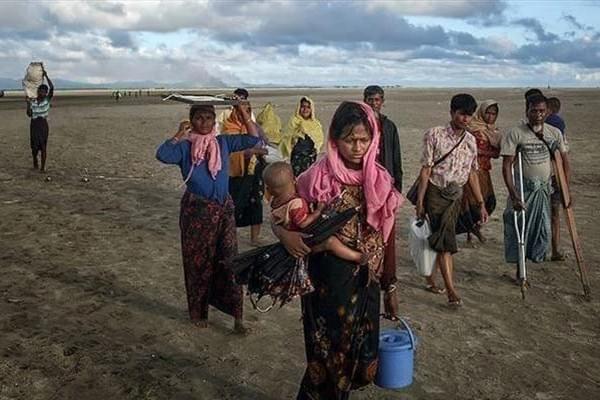
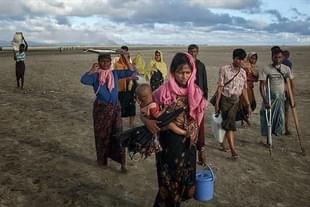
The arrest of 44 touts who were involved in trafficking Rohingyas and Bangladeshis into India by a joint team of the National Investigation Agency (NIA) and the Assam Police’s Special Task Force (STF) through Tripura has laid bare a complex smuggling network spread across the country.
The busting of this network earlier this month was the result of painstaking investigations launched by the STF several months ago. The NIA-STF teams discovered that while the infiltration from Bangladesh happened primarily through eight towns along the India-Bangladesh border in Tripura, it was through three of these towns--Sonamura, Belonia and Bishnupur--that thousands of Rohingyas have been smuggled into India.
Swarajya travelled to these three distant towns in Tripura to get a first-hand account of this racket that represents a national security threat.
At Sonamura:
A typical working day for Pratul Roy*, a resident of Sonamura, see this map--a small town in Sipahijala district of western Tripura bordering Bangladesh’s Comilla province--used to start after dusk.
Roy and his two associates--Ismail Sheikh* and Jasim Mondal*--would congregate at a spot on the banks of the Gomati river that flows from Tripura into Bangladesh. They would then make their way stealthily to a spot near the Srimantapur Masjid which is a stone’s throw away from Srimantapur checkpost next to the international border.
The trio would, from their vantage point that gave them a clear view of the checkpost, the border and the Gomati river flowing into Bangladesh, call up the ‘agents’ on the other side of the border.
Upon receiving Roy’s green signal, the Bangladeshi ‘agents’ would guide the Rohingyas waiting there to small boats. The country boats would then be rowed into India very stealthily by dodging BSF patrols and the Rohingyas would be ‘delivered’ safely to Roy’s custody.
This human trafficking would happen, on an average, twice a week. And every time, about 15 to 20 Rohingyas would make their way into India illegally.
A month before this infiltration, Roy would have received an ‘advance’ payment--usually around Rs 5,000 for each Rohingya to be smuggled in--along with details such as the name, age and photograph of every Rohingya.
Roy would then, allegedly with the help and connivance of lower-level government officials, local panchayat functionaries and representatives and allegedly even the local police, make fake documents like birth certificates, residential certificates and ration cards in the names of the Rohingyas who would be smuggled in.
Applications for Aadhar cards for the illegal infiltrators would be submitted on the basis of these fake documents.
Officers of the National Investigation Agency (NIA) who along with Assam Police’s Special Task Force (STF) probed the widespread racket and arrested Roy and many other touts like him earlier this month told Swarajya that the connivance of officials issuing the Aadhar cards on the basis of the fake documents is apparent.
Roy and his associates would then put up the Rohingyas who had been trafficked into India at ‘safe houses’, mostly in small hamlets in Khedabari, Taksapara and Padma Nagar near Sonamura.
The Rohingyas would be schooled on how to conduct themselves and what to say in public by Roy and his associates at these safe houses.
“The Rohingyas would be tutored on what to say if they are asked about their credentials, how to remain inconspicuous and draw as little attention to themselves as possible, and a few phrases in Hindi. They would be asked to speak as little as possible among themselves and dress in a manner that would not draw suspicion. Their Indian documents like Aadhaar cards and ration cards would then be handed over to them,” said an NIA officer who was involved in the nationwide operation to crack down on the network of touts.
After this tutoring, Roy would take the Rohingyas by road to state capital Agartala (less than 140 kilometres away).
At Agartala, another tout would take over the responsibility of taking the Rohingyas by train, mostly to Delhi from where they would be despatched by yet another set of touts to other parts of the country to work as labourers.
Roy would receive the rest of his commission--about Rs 10,000 per Rohingya--after handing them over to the touts in Agartala. His total earnings per trafficked Rohingya would be about Rs 15,000, a sum he would share with his two associates.
But, say NIA officers, Roy would have to bribe the many others who helped procure or make the fake documents and then issue Aadhaar cards, from his ‘commission’.
After all that, Roy would still be left with about Rs 3,000 (for every Rohingya) he would help enter India.
Considering the fact that he had helped, on an average, about 15 Rohingyas enter India at one time--the trafficking would happen about twice a month--his earnings per month had been amounting to about Rs 90,000 a month.
That’s a substantial amount for a resident of Sonamura. Roy’s relative affluence is reflected in the house he has built for his joint family--his aged parents, two younger brothers and their wives and his own wife and two children--at Thakurmura bazar in Sonamura.
“The family used to stay in a mud house earlier. His (Pratul Roy’s) father was a small farmer who would barely make ends meet. The family was very poor and couldn’t afford education for Pratul and his siblings. His mother used to work intermittently as a small vegetable vendor,” the Roys’ neighbour, Sushil Biswas, told Swarajya.
Pratul, said Biswas who owns a small grocery store near Sonamura Town Hall, is the eldest of the three siblings and used to do odd jobs after dropping out of primary school.
“About seven years ago, he (Pratul) started making a lot of money. His parents told us he was into some business, but we all suspected he was engaged in smuggling. He earned a lot over the past few years and built a concrete house with five rooms three years ago. He also owns a motorcycle and there are rumours that he has bought a lot of farmland,” said Biswas.
Pratul Roy is one of the 21 touts arrested by the NIA-Assam Police joint team from Tripura earlier this month. All were involved in facilitating the infiltration of Rohingyas as well as Bangladeshis from across the border.
Entry through Belonia
Another arrested tout is Hemen Mondal*, a resident of Belonia (see this map) in South Tripura district that adjoins Feni province of Bangladesh. Belonia, like Sonamura, is a small town with a river--the Muhuri--flowing into Bangladesh.
Mondal, 48, who owns a house adjacent to Vidyapith Park off Netaji Palli Road in Belonia, is known to his neighbours as a private but helpful person. But some neighbours, like Biswanath Majumder, have been suspicious of his activities.
“He (Hemen) used to say he is a rice trader, but there was something suspicious about his activities. He also got rich very quickly, over the last five years or so. We used to see him with some dubious people at times, and last year we got to know he was being probed by the police,” said Majumdar.
Like Sonamoura’s Roy, Hemen also has a few associates to help him smuggle in Rohingyas. But his task was more difficult since a barbed wire fence runs along the Muhuri river for almost the entire stretch of Belonia.
The process of preparing for the (illegal) entry of the Rohingyas used to start a few weeks before their actual entry. Hemen would be sent the names, physical details and photographs of the Rohingyas.
He would then allegedly bribe local officials, including panchayat representatives, to get fake birth, school and residential certificates in the names of the Rohingyas. And on the basis of these, he would get ration cards and Aadhaar cards in their names.
Hemen’s modus operandi for smuggling in the Rohingyas used to be quite simple. He would cross the river (Muhuri) to its sparsely-inhabited northern bank and wait in a forest beside farmlands just next to the international border.
At a predetermined time usually close to midnight, the Bangladeshi agents on the other side of the border would communicate with Hemen and his associates through powerful torch lights.
They (Hemen and his associates) knew the exact time the BSF patrols would be passing through a particular stretch along the border road that runs parallel to the fence on the south bank of Murari.
The floodlights atop the fence made their task difficult. Unlike the Gomati river at Sonamura, the Murari is a narrow river through which boats cannot pass by unnoticed.
Crossing over on foot through the unfenced part of the border has been, thus, the only option and a comparatively easier one as well.
Thick vegetation and farmlands provided a lot of cover to the infiltrators. As in Sonamura, the Rohingyas came over in batches of five or six to Belonia.
A maximum of 12 to 15 Rohingyas would cross over on one particular night of ‘operation’. That’s because a larger number would arouse suspicion and would be difficult to hide or spirit away.
Hemen and his associates would take the Rohingyas to safe houses in Dakshin Bharatchandranagar, Kalabaria, Chhaigharia and Kanchannagar.
All these are wooded and sparsely populated areas with small hamlets in the midst of scattered forests. They provide the perfect cover for anyone wishing to hide.
Like Pratul Roy, Hemen Mondal also used to tutor the Rohingyas on how to talk, dress and conduct themselves. And after such intense tutoring for three to four days, he would take them by road, or by a (twice daily) passenger train to Agartala.
In Agartala, Hemen would hand over the Rohingyas to another tout who would be responsible for taking them by train to other parts of the country, mostly Delhi.
Bishnupur--Another Entry Post:
Bishnupur is a sparsely populated village in the Rupaichari administrative block of South Tripura district. It is barely three kilometres away from the India-Bangladesh border. Bangladesh’s Khagrachari province in the country’s Chittagong division lies to its east.
Bishnupur (see this map), with its population of a little over 2,000 that includes a substantial number of indigenous tribals, is surrounded by thick forests that stretch right up to the international border. The Feni river, which originates further north of Bishnupur in South Tripura district, forms the international border.
And it is this riverine border that facilitates the illegal infiltration of Rohingyas. There are many other small and large settlements along the border, but Bishnupur has a unique advantage.
Bishnupur has many hillocks in its vicinity and those offer a clear view of the border and the Feni river. Being remote--it is connected only by a dirt road and the nearest black-topped road is two kilometres away--and located in the midst of small hillocks and narrow ravines which are enveloped by forests, Bishnupur is the perfect staging post for a trafficking operation.
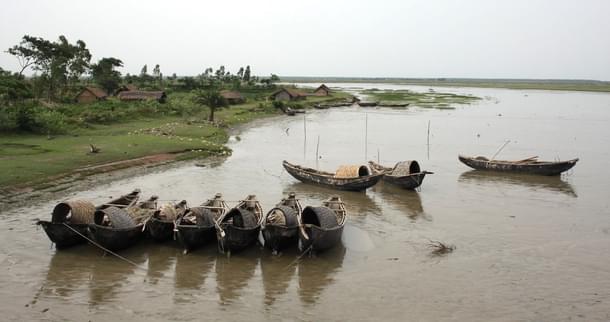
Also, the nearest BSF border outpost (BPO) is ten kilometres away and the area is not as frequently patrolled as other parts of the border.
The operation here is controlled by Muktar*, who actually lives in Sabroom, a town along the international border that is about 20 kilometres south of Bishnupur.
Muktar, 50, is a notorious smuggler who, allege locals, is well-connected with the local police and also the Border Security Force (BSF). He has very close relatives across the border, especially Ramgarh that lies just across the border from Sabroom.
Many say that Muktar was born in Bangladesh and came across illegally with his parents when he was a teenager. But he, like all other infiltrators, possesses Indian citizenship documents, including a passport.
Muktar’s two-storied house near the local bus stand is the envy of locals. He used to be accompanied by some local toughs at all times and had a Robin Hood sort of reputation.
Muktar’s modus operandi was quite similar to that of his counterparts in Sonamura and Belonia. He would ensure the smooth entry of Rohingyas from across the border in boats through the Feni river.
His associates used to receive the Rohingyas at the border, and then hide them in safe houses in the midst of forests. They would later on be brought in small batches to Sabroom, from where Muktar would send them off to Agartala.
Incidentally, the districts of Comilla (next to Sonamura), Feni (next to Belonia) and Khagrachari (next to Bishnupur) are quite close to Cox’s Bazar in Chittagong. Chittagong adjoins Myanmar’s Rakhine province from where lakhs of refugees have come into Bangladesh see this map and this map).
Journey from Agartala:
From Agartala, the Rohingyas travelled by train to Kolkata and Delhi. Most would go to Delhi. Once in Delhi, another network of touts would take charge and send them out to Jammu, Haryana, Karnataka, Tamil Nadu, Kerala, Maharashtra and Andhra Pradesh.
The dispersal to the various states would depend on the demand for labour in those states at that particular time. The Rohingyas would be sent by trains to their ultimate destinations where another tout would receive them, take them to Muslim ghettos in the cities where they (the Rohingyas) would be safe.
How much and how the Rohingyas pay for entry into India:
The cost of this entire trip from Cox’s Bazar, which houses over 10 lakh Rohingya refugees from Myanmar’s Rakhine province, to Tripura and then to Delhi costs each Rohingya at least Rs 30,000. A major chunk of that sum is pocketed by the touts in Tripura.
“The Rohingyas who get trafficked into India usually have some savings. Typically, they would have spent a few months at the refugee camp at Cox’s Bazar, earned some money there and then got in touch with the touts there to gain entry into India,” said the NIA officer.
But the entire sum (of about Rs 30,000) is not paid upfront at one go. They (the infiltrators) do not generally have such a lot of money with them.
“A large part of that comes in the form of loans given to them by the touts. Once they start working as labourers in the cities, the touts extract a share of their earnings every month through their agents. These agents, who are musclemen, ensure that the Rohingyas pay up regularly. The interest on the loans are very high and it takes each Rohingya at least five years to pay off the entire loan,” said the NIA officer.
Even after clearing off the entire loan, the Rohingyas have to continue paying a small sum every month to the touts. That’s ‘protection money’ given to the touts to keep them safe and the local authorities at bay.
How the operation was busted:
In February this year, the Assam Police detected a group of persons travelling on a train that had originated from Agartala and had halted at Karimganj railway station. Karimganj is located on the Assam-Tripura border.
The Assam Police, upon interrogating the group of people, discovered they were actually Rohingyas who had entered Tripura illegally. But all these Rohingyas were carrying Aadhaar cards and other documents that showed them to be Indian citizens.
The Assam Police then increased vigil on trains entering Assam from Tripura and within a month, 450 illegal infiltrators, many of them Rohingyas, were detected. They were pushed back into Bangladesh with the help of the BSF.
Interrogation of these infiltrators revealed that their entry into India was being facilitated by touts present on both sides of the border. The Assam Police also discovered that the network of touts was spread across the country with the touts in Tripura having close connections with touts in Delhi and other parts of the country.
The case was taken up by Assam Police’s Special Task Force (STF) in July this year. The STF arrested 10 such touts. Realising the grave national security implications, the Assam government requested the NIA to participate in the nationwide probe. The NIA formally took charge of the investigations on 6 October.
The NIA and the STF conducted a comprehensive investigation and launched a nationwide operation on November 8 morning. NIA teams, assisted by the STF at some locations, conducted searches in 55 places across ten states--Tripura, Assam, West Bengal, Karnataka, Tamil Nadu, Telangana, Haryana, Rajasthan and the Union territories of Jammu & Kashmir and Puducherry.
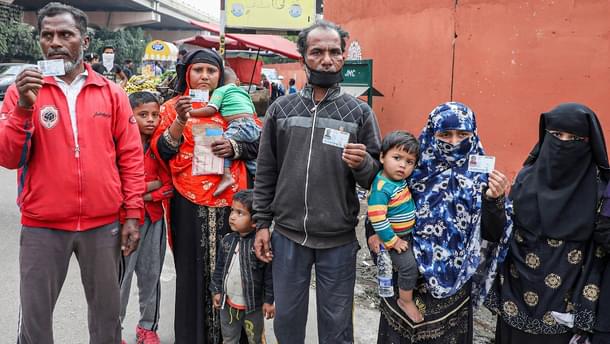
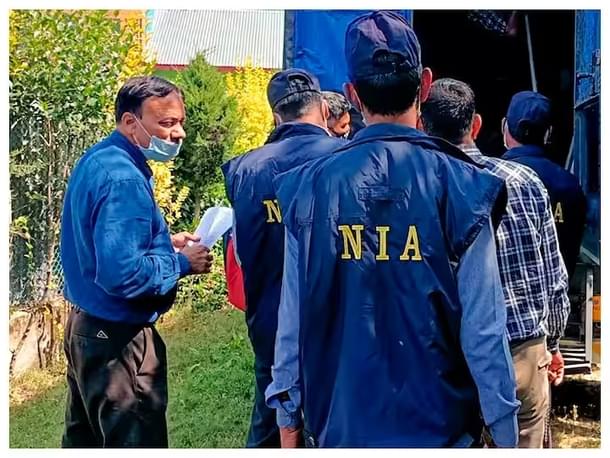
While 21 touts were arrested from Tripura, 10 were arrested from Karnataka, five from Assam, three from West Bengal, two from Tamil Nadu and one each from Puducherry, Telangana and Haryana.
The NIA officer told Swarajya that investigations into this entire human trafficking racket are going on. “Not only the touts, but the entire ecosystem that includes all those who help the touts, will be demolished. We will carry out more raids,” he said.
He pointed out that for the racket to be totally obliterated, it is important to identify and punish all those who facilitate the trafficking and are involved in the process of giving Indian citizenship documents to the illegal infiltrators.
Postscript: The families of Pratul Roy, Hemen Mondal and Muktar have locked their homes and are said to be staying with relatives in other parts of Tripura. Though they have been arrested, their associates and all those who were part of the racket are still at large.
*Names of the touts have been changed at the request of the NIA since this is an ongoing investigation.





